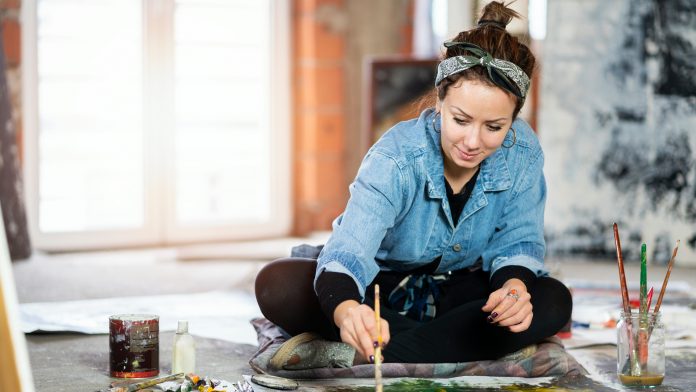
What influenced that added spark of creativity during Covid lockdowns? Researchers may have discovered why.
For some people, the Covid lockdowns were the perfect opportunity to start a new business or take up a hobby, but what influenced this newfound creativity? A study conducted at the Paris Brain Institute (Inserm/CNRS/Sorbonne University/AP-HP) has revealed how creativity evolved during Covid lockdowns and the factors that may have influenced it.
Creativity is one of the cognitive functions that allow us to be flexible and find solutions in new environments. The Covid pandemic forced us to adapt and find new ways to become creative.
The full study can be found in Frontiers in Psychology.
More stressed but more creative
The researchers conducted an online survey to assess the impact of Covid lockdowns on creativity, using a two-part questionnaire. For example, the participants were asked whether they were alone during the Covid lockdown, if they were more creative than before and what creative activities they carried out.
“Our first observation is that the lockdown was psychologically distressing for the majority of participants, which other studies have shown, but that on average, they felt more creative,” said Théophile Bieth (AP-HP), co-first author of the study. “By correlating the two pieces of information, we showed that the better people felt, the more creative they thought they were.”
The researchers asked about the number of obstacles encountered by the participants; they discovered a non-linear relationship. They found that the study contributors faced more obstacles during their usual activities, forcing them to find creative ways to accomplish their goals.
Changes in creative behaviour during Covid lockdowns
The second part of the questionnaire was a list of 30 different activities. These included cooking, painting, gardening and music. Participants were asked if they engaged in any of these activities in the last five years, whether their practice had increased during the Covid lockdowns, why and how often, and if not, why it had decreased.
“This section of the questionnaire tried to measure more objectively the quantitative and qualitative changes in creative behaviour, whereas the first part was based on a subjective report of the situation,” explained Emmanuelle Volle (Inserm), the last author of the study. “Our results show that this measure of creative behaviour is in line with the measure of subjective change reported by the subjects. In both cases, the changes observed were related to free time and emotional feelings.”
The researchers found that cooking, sports and dance programmes, self-help initiatives and gardening all increased the most during Covid lockdowns.
The link between positive mood and creativity
The study highlighted an overall increase in creativity during the first Covid lockdown. This could be linked to having more free time, feeling more motivated, the need to solve a problem or adapting to a new situation. However, when negative changes in creativity were experienced, they were related to negative emotions, such as stress and anxiety.
The correlation between positive mood and creativity is quite debated. “There is some evidence in the scientific literature that you need to feel good to be creative, while other evidence points the other way. Also, it is not known in which direction this process takes place: do we feel good because we are creative or does being creative make us happier?” concluded Alizée Lopez-Persem (Inserm), co-first author of the study. “Here, one of our analyses suggests that creative expression enabled individuals to better manage their negative emotions linked to confinement and therefore to feel better during this difficult period.”
























